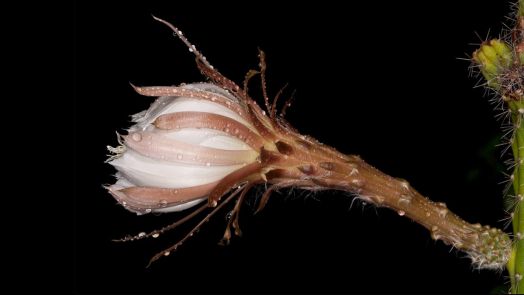A sprawling cactus with tall stems, classy white flowers and a baseball-sized yellow fruit was found in Terra Ceia Island in 1919. A scientist who discovered the plant called the area a “botanical fountain of youth.” New roads, a surge of development in the '70s, plant collectors, poachers and a mixture of natural events pushed the aboriginal prickly-apple to the edge. By 2002, the cactus was gone in Manatee County.
 "The plant was first identified as potentially being in need of federal protection in 1975."
"The plant was first identified as potentially being in need of federal protection in 1975."
» Tierra Curry, scientist
Under pressure to take action, the U.S. Fish and Wildlife Service released a plan Thursday to designate 7,855 acres as critical habitat for two endangered cacti, including the aboriginal prickly-apple, a stubborn holdout in three other Southwest Florida counties and a relative rookie on the federal Endangered Species List.
“These native plants are being squeezed out of existence, pressed between coastal development and rising sea levels,” said Jacki Lopez, Florida director of the Center for Biological Diversity.
The move is part of a court-approved settlement in 2011 between the Center and the FWS. The deal fast-tracks protection decisions by the FWS for 757 species, including the aboriginal prickly-apple, aka Harrisia aboriginum, and the semaphore cactus (Consolea corallicola).
Life for plants in stormy, salty high-tide coastal strands, berms and hammocks is hard enough. Poaching and development are still threats, plus sea rise, according to the FWS, which is proposing 3,444 acres from Manatee to Lee counties as critical habitat for the aboriginal prickly-apple.
The plant’s survival is so fragile wildlife experts considered keeping its locations secret.
A 2002 survey by the Institute for Regional Conservation, a private group in Miami, was unable to find the plant in Manatee County, concluding “only occasional isolated fragments of suitable habitat for Harrisia aboriginum remain.” Under the FWS proposal, the aboriginal prickly-apple will be reintroduced.
It took a lawsuit but the FWS listed the aboriginal prickly-apple as endangered in 2013. “The [plant] was first identified as potentially being in need of federal protection in 1975, and [was] on the candidate waiting list since 1980,” said Tierra Curry, a senior scientist at the Center.
The FWS is proposing to protect 222 acres in Manatee County, including 66 acres of state lands in Madira Bickel Mound State Park, Terra Ceia Preserve and Cockroach Bay Preserve. County lands include Emerson Point. About 90 acres of privately owned land are up for protection. A public comment period ends March 23.
“In addition to sea level rise, [the cactus is] threatened by development, non-native plants, and iguana,” Curry said in an email.
The FWS estimates 300 to 500 aboriginal prickly-apple remain in 12 clusters on county, state and federal land and privately owned property. Seven clusters have less than 10 plants each. A group of aboriginal prickly-apple in Longboat Key was reduced from 226 plants in 1981 to five in 2007 because of development, the FWS said.
In Sarasota and Charlotte counties, parts of Longboat Key (54 acres), Casperson Beach (116), Osprey (116), Manasota Key (415) and Charlotte Harbor (51) are targeted for protection. In Lee County, Sanibel Island (635) and 1,702 acres in Cayo Costa, where aboriginal prickly apple will also be reintroduced, are listed.
At A Glance
Harrisia aboriginum is a cylindrical-stemmed cactus with nine to 11 ridges and can grow up to 20 feet from base to tip; occurs in coastal strands, berms and hammocks with trees; formerly found throughout South Florida and the Keys; plants live close to mangrove zone but not in it; produces scented white flowers up to 5 inches long May through September and round yellow fruit June through October.
Outside
Bitcoin mining emissions in China will hit 130 million tonnes by 2024 https://t.co/w6He7so8N2 pic.twitter.com/qYUDtBdeRK
— New Scientist (@newscientist) April 9, 2021
The Gunk Report
For the Blue-Green Algal Bloom Weekly Update from the Florida Department of Environmental Protection, tap here. For DEP's Algal Bloom Sampling Map, tap here.
What, me worry?
» "PLAYING WITH SHARKS," which recently premiered at the Sundance Film Festival, documents diving legend Valerie Taylor.